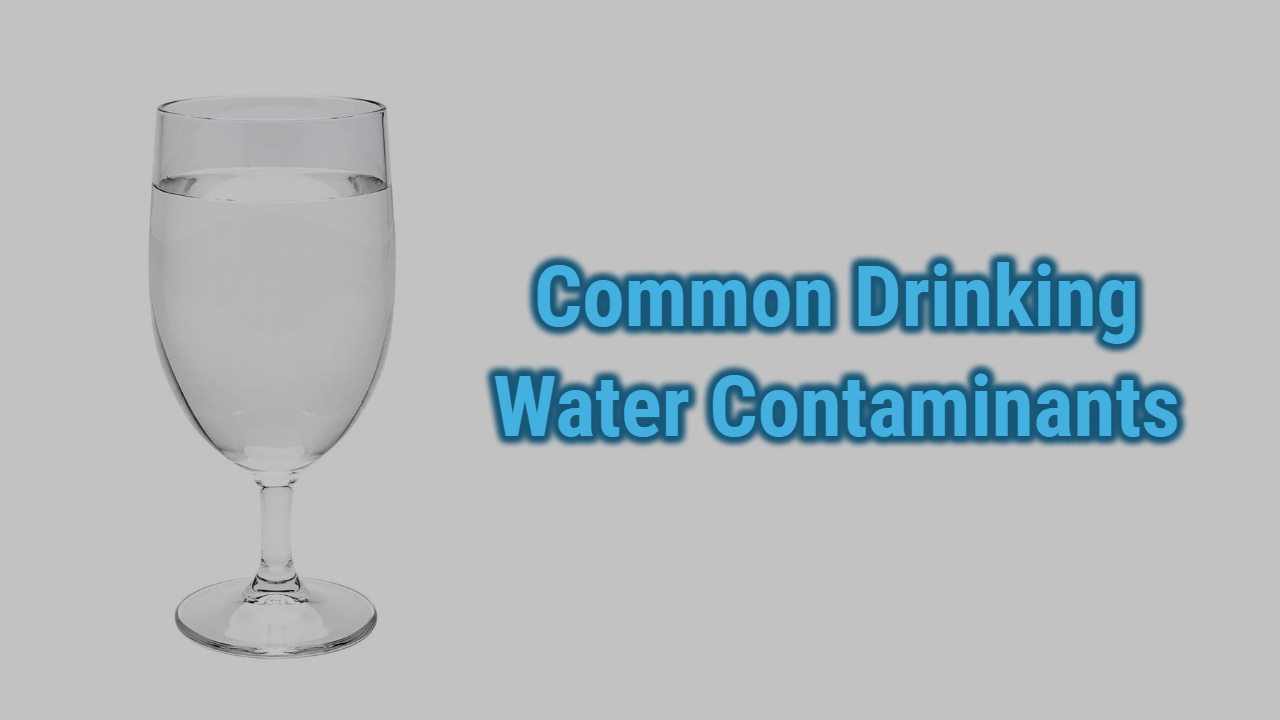We often miss seeing how many contaminants we are consuming in the water. Be it municipal tap water or be it well water, almost all the water that is not processed or filtered has several contaminants.
You must be wondering what the contaminants in the water mean; water contaminants are any chemical, biological, or radiological substance that finds its way into the water. These contaminants change the water quality, and when you consume the water that is highly concentrated with contaminants, you face certain problems.
Depending upon the area or the type of water that you use, there are few contaminants that are most commonly found in the water. Some of them can be dangerous for your health, and some of them can cause few problems now and then. Before we see what these common contaminants are, let us see the categories of these contaminants,
Table of Contents
Chemical Contaminants
Elements or compounds that occur naturally in the water or are man-made. This includes nitrogen, bleach, toxins that are produced by bacterias, pesticides, etc. The most common chemical contaminants that are found in the water are chlorine and chloramines.
Biological Contaminants
The organisms in the water are called biological contaminants in the water. You might have heard about microbes or microorganisms in water, and those are biological contaminants of the water. Some examples of this kind of contaminant are viruses, protozoan, bacteria, parasites, etc.
Physical Contaminants
Physical contaminants of the water are those that change the appearance and taste of the water. Sediments, dust, rust, etc., can be called physical contaminants of the water.
Radiological Contaminants
Basically, radiological contaminants are those chemical contaminants that have an unbalanced number of protons and neutrons. Although, radiological contaminants are rarely found in the water. Few examples of these radiological contaminants are uranium, cesium, plutonium, etc.
Contaminants that are commonly found in the water
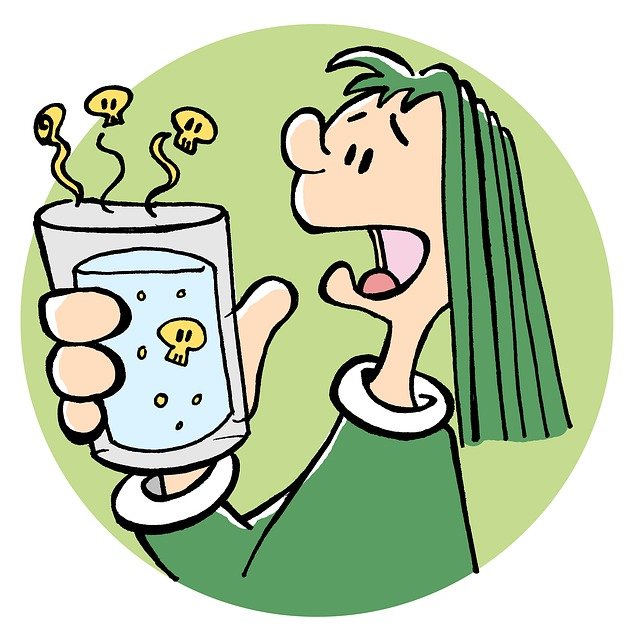
There are so many contaminants of the different kinds that can be found in the water. Here is the list of few contaminants that are found most commonly in the water.
- Chlorine– Chlorine is one of the most common contaminants that are found in the water. Almost all the city water has chlorine in it. It is added to the water in order to remove algae and slime from the water. Chlorine is also added to the water as a disinfectant, and it leaves a distinctive smell and taste in the water. If there are more than milligrams of chlorine per liter in the water, it is safe to drink.
- Chloramine– Chloramine is also one of the chemicals that is used as a disinfectant. Chloramine is a combination of chlorine and ammonia. The water that has chloramine in it will not have pathogens in it. Just like chlorine, it is completely safe to drink water that has 4 milligrams of it in one liter.
- Aluminum– Aluminium is one of the contaminants that naturally find its way into the water. It is naturally found in the earth’s crust as well. If the water has high concentrated aluminum in it, it will have a blue-ish tint to it. If the amount of aluminum is 0.2 milligrams or lower than that, It is completely safe for you to drink.
- Lead– Lead generally finds its way into the water from your plumbing lines or the city water lines if that is your main water source. The plumbing lines that are made from lead get corroded, and the particles from it are mixed with the water flow. There should not be any amount of lead in the water that you use. Lead is hazardous to your health and causes high blood pressure and other issues related to the kidneys if regularly consumed in the water.
- Bacterias and viruses– Bacterias and viruses find their way into the water from underground sewer or wastes. Chlorine that is put into the water for its treatment removes these bacterias and viruses from the water. The bacterias and viruses include coliforms and E. coli.
- Copper– Even, we need copper in our body, an extensive amount of it can cause problems related to the stomach, kidney, etc. Sometimes it even causes constant vomiting. Copper can get into the water via corroded plumbing lines or faucets. That is why it is necessary to ensure that you are not drinking water with a high amount of copper in it.
- Sediment– This is another type of contaminant almost everyone finds in their water supply, be it municipal water or well water. These sediment contaminants are sometimes found in the dust, rock debris, minerals, etc., which are called sediments. The water that has a high amount of sediment in it will look cloudy and will have a somewhat higher density than regular clear water. It is necessary to remove sediments from the water before you use it.
- Iron and rust– You cannot identify the iron in the water just by looking at it. But when the water comes into contact with the oxygen of the air, it will have reddish or brown spots in your kitchen sink, bathroom floor, wherever you use the iron water. The iron in the water even creates rusting of the pipelines, and this rust finds its way into the water, making it more hazardous than before. If there is iron in the water, you will be able to identify it from the smell and the taste of the water.
- Fluoride– Fluoride is one contaminant that is found in the water, and still there is no one knows whether it is good or not. There are some consumers who are claiming that the fluoride in the water has dental benefits, whereas some of the consumers claim that the fluoride in the water causes cancer. The municipal adds 0.7 mg/l of fluoride into the water. According to our view and research, if fluoride is consumed in a limited amount, it does have dental benefits, but again it all depends on your preferences.
- Ammonia– Ammonia is a gas that is found in the water; it comes from the fertilizers that are found in the earth to grow plants. These fertilizers create a gas called ammonia, and it travels inside the earth and mixes up with the water in the earth. If there are a high amount of bacterias and viruses in the water, ammonia is also used to eliminate them from the water. It is safe to have a small amount of ammonia in your drinking water but hey! It’s never too much to be safe, Right?
- Arsenic– Arsenic is also one of the contaminants that occur naturally in the earth and later on finds its way into the water. Certain parts of the US have a higher amount of arsenic in their well water. So if your main source of water supply is well water, it is advised to get a filtration that removes arsenic from the water. Arsenic is known to cause heart diseases and neurological problems.
How to remove contaminants from the water?
One of the easiest ways to remove contaminants from the water is to get a filtration system after finding out the contaminants that are residing in your water. Here is the list of filtration systems you can get for your house or office space.
1. Undersink Filtration System
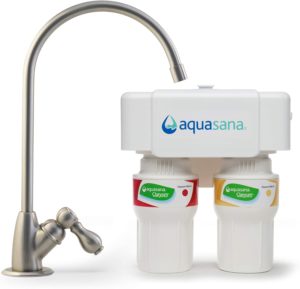
Undersink systems are really easy to install and there are different types of under sink systems you can get to remove the contaminants from the water and ensure that you and your family are drinking the purest water that you can get. Here is the list of different under-sink filtration systems you would want to choose. These filtration systems are the best among others.
- Waterdrop WD-G3-W RO filtration system
- Frizzlife MK99 filter system
- iSpring RCC7AK Reverse Osmosis System
- APEC WFS-100 3 stage RO system
- Aquasana AQ-5200 2 Stage RO system
- APEC ROES-50
- Home Master TMHP RO system
2. Countertop Filtration System
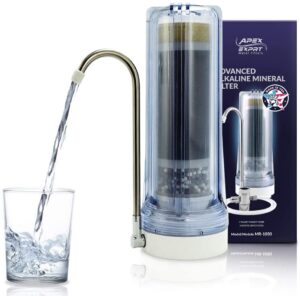
Countertop filtration systems are ideal for small families or for people who are living in a dorm room. Why risk drinking the water that might have high contaminants in it when you have so many options of filters to choose from,
- Waterdrop G2 RO Tankless System
- Home Master TMJRF2
- Express Water EZRO5 RO System
- Berkey BK4X2-BB Gravity Water Filter
- iSpring CKC1C
- Apex MR-1050
- iFilters CNTP-1C
3. Whole House Water Filter System
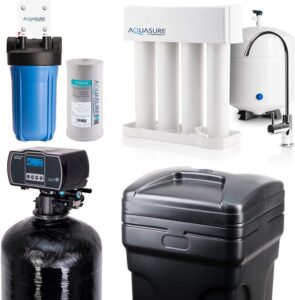
Whole house water filter systems are the wisest choice you can make. You will not only be drinking pure water coming out of your kitchen sink faucet, but you will also be using this purified water at each water outlet in your house. It will eliminate any risk of water contaminants and waterborne disease. And guess what? You have all these options to choose from.
- Express WH300SCKS
- Aquasure AS-WHF64D
- iSpring WGB21B
- iSpring WGB22B
- iSpring WSP-50
- Culligan WH-HD200-C
- Home Master HMF3SdgFeC
4. Faucet Water Filter System
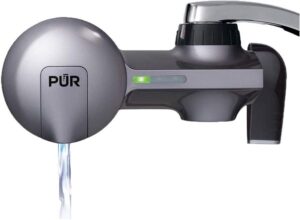
Sometimes you just have few contaminants in the water, and you do not want to consume it while you are drinking it. Specifically, for that time, you can install the faucet water filter systems.
- Waterdrop WD-FC-01
- PUR PFM350V
- PUR FM2500V
- Brita 7540545
- Brita 35214
5. Reverse Osmosis System
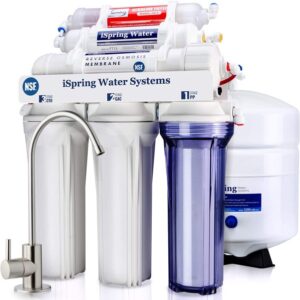
Reverse Osmosis systems are known for producing highly purified water without ant contaminants and minerals. If you want water that is just water, no minerals or anything in the water, getting a Reverse Osmosis System will be a good choice for you.
- Home Master TMAFC-ERP
- Waterdrop WD-G3-W
- iSpring RCC7AK
- Waterdrop G2
- Express Water RO5DX
- APEC ROES-PH75
- Whirlpool WHER25
6. Shower Filter System
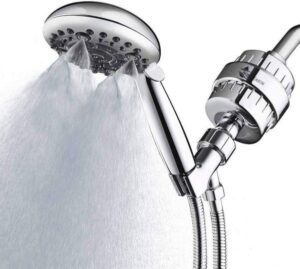
If you are taking extra care of the water, you drink, but if you are not careful what kind of contaminants are there in the water you shower with. Did you know on average a 15-minute shower is equal to drinking one glass of water? Well, now that you know this, why don’t you choose shower filters from the best shower filters from the list given below,
- AquaHomeGroup AHG15
- AquaHomeGroup AHG25
- Luxsego FSH-001
- AquaBliss AB-SF100
- Hopopro 18
- Aqua Earth AQUA-15
- Aquasana AQ-4100
7. UV filter system
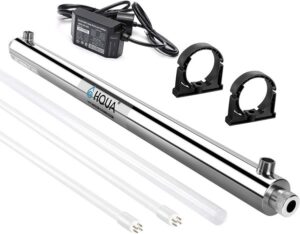
With the development in technology in almost every field, there is a development in water filters as well. The UV filters use the UV light lamp that removes almost every microorganism from the water. You can choose a UV filter system that meets your needs the most; here’s a list of the best of them,
- iSpring RCC7AK
- HQUA-OWS-12
- iSpring RCC1UP-AK
- APEC ROES-PHUV75
- Express Water ROUV10DCG
Conclusion
There are several contaminants that are there in the water we consume. It is really important that the water that we are consuming does not have contaminants to ensure the safety of our health. You can get the water tested and find out the contaminants in your water. And you can choose the most suitable system that will remove all of those contaminants and deliver you the purest water.
Some of these contaminants are really hazardous to your health and can cause coronary or abdominal problems. Why take the risk and pay the doctors to treat those diseases when you can just get a water filter that will remove all the possibilities of this.
